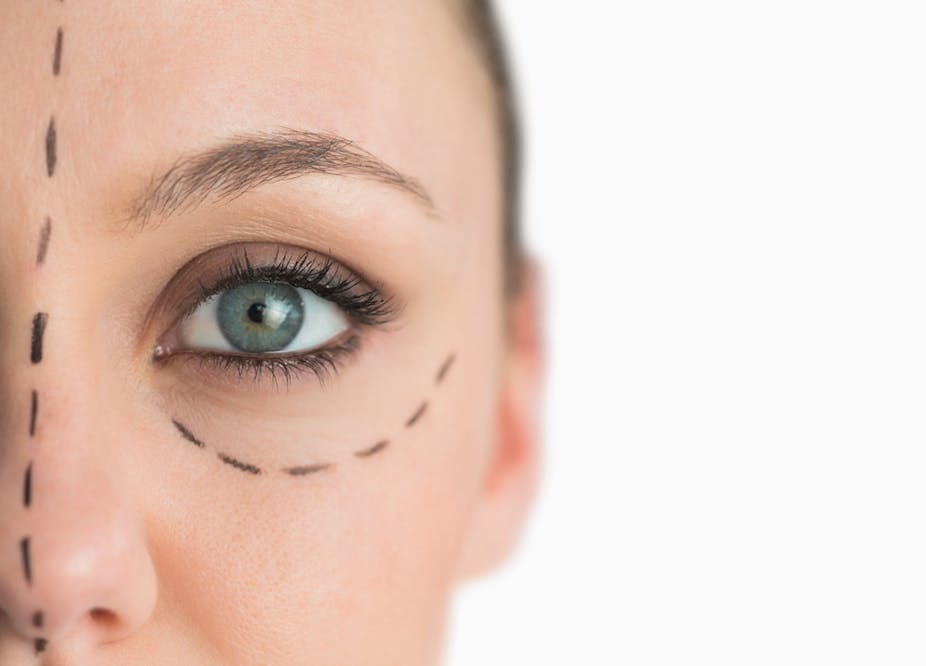Cosmetic surgery is one of the fastest-growing sectors of the medical industry, worth US$2.3 billion in 2010 and forecast to grow to $3.6 billion in 2015. Of this, non-surgical procedures, which include Botox and dermal fillers, account for nine out of ten procedures and 75% of the market value.
But it is clear that the industry is failing when it comes to proper regulation of procedures and the private practitioners who sell services to make a profit – cosmetic surgeons who may have little or no qualifications, no experience, non-sterile instruments and no insurance. The Medical Defence Union (MDU), who insure around half of all doctors and surgeons, said in 2012 that it had paid out millions in compensation to cosmetic surgery patients. The MDU also talked of large numbers of clinics that did not offer proper aftercare and ignored patients’ complaints, surgeons who vanished after causing suffering and staff who undertook cosmetic work without full liability insurance.
Under current rules, practitioners can operate outside their speciality or as the Royal College of Surgeons (RCS) puts it: GPs can do nose jobs. To reduce the risk to patients, the RCS is now advocating a voluntary list of surgeons who are qualified to specifically practice cosmetic surgery, as opposed to more general surgery. While a voluntary list would allow those undergoing procedures some guide to qualified cosmetic surgeons who are trained and insured, those who are less able to research or pay will still fall prey to more unscrupulous cosmetic surgery businesses.
The scale of the problem
While many think of cosmetic surgery as a nip and tuck here and there, it is as risky as any surgery. In response to the MDU’s criticisms in 2012, Peter Walsh, chief executive of patient safety charity Action against Medical Accidents, called the cosmetic industry “murky and dangerous.”
Only 18 months ago, the government published the long-awaited Keogh Report about the provision of cosmetic surgery and cosmetic medicine in the UK following the PIP breast implant scandal where thousands of women across the globe inadvertently purchased sub-standard implants.

It was also extremely critical of the way cosmetic surgery was practised in the UK, drawing attention to a long list of things that were unsatisfactory – such as the poor quality of some of the products being used, sub-standard patient care, sloppy record keeping and misleading or trivialising marketing. And Sir Bruce Keogh, NHS England’s national medical director and author of the report, was certainly not confident in industry vetting itself:
Previous attempts at self-regulation in the industry have failed, largely because voluntary codes have meant that only the best in this disparate sector commit themselves to better practice, while the unscrupulous and unsafe carry on as before.
The PIP implant scandal made headlines but it is certainly not the only example of things going wrong. The sad case, for example, of Denise Hendry, who died seven years after a disastrous liposuction on her abdomen that pierced her bowel, should serve as a warning about the possible serious consequences of treatments provided privately and which will be a risk without tighter regulation. Hendry’s operation was performed by a Swedish surgeon at a private hospital in Lancashire, who voluntarily removed himself from the medical register before any official action could be taken by the General Medical Council.
While the market for male procedures is also growing, 90% of patients are women and they are paying a high price in more ways than one: they pay out thousands of pounds for treatments, then can suffer the consequences of scarring, pain, and lack of after-care from sub-standard providers.
A thorough overhaul
So we all know there is a problem, but from the view above, it’s clear that voluntary codes alone will not work. Cosmetic surgery law needs a facelift – a thorough overhaul of the industry – not some Botox. Let’s at least use the Keogh Report to bring in stricter regulation that creates one independent umbrella body, a Cosmetic Surgery Authority, to monitor qualifications, training, facilities, prices, after-care, counselling, cooling-off periods between consultations and surgery, and which relates to cosmetic medicine as well as cosmetic surgery.
Regulating private medicine is nothing new in the UK – the Human Fertilisation and Embryology Authority, for example, has been auditing infertility treatments since 1990. So it is very possible to do the same when it comes to cosmetic procedures. These RCS’s suggestions for a list, though welcome, are merely offering to iron out a few wrinkles as part of a make-over. This may look like an improvement but it is unlikely to stand the test of time.

